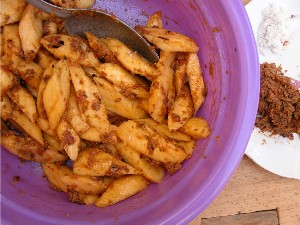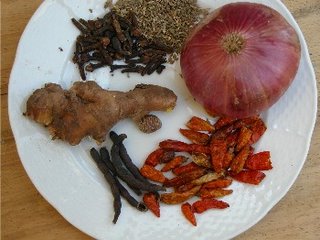
After celebrating a family graduation at NYU last week, our family and friends trooped over to to
Zerza's for a festive dinner. The beautiful word "zerza" is equivalent to the Berber term "teazerai," and describes the brooch or clasp women in the Atlas mountains use to attach their garments. Zerza's logo is the lovely example to the right.
It was my second visit to the Moroccan family-style restaurant. The first time last year was on a weekend and there was a crowd there to watch the "belly" dancers, and maybe to smoke the
hookah, or simply to savor a romantic dinner for two. I enjoyed the atmosphere, but the draw for me both times was the food, from my
harira soup to their
tagines (this time I had the lamb
tfaya, but others in our party enjoyed the chicken tagine lemon , the kebabs and the baked red snapper). We started our meal with
bourekas, savory pastries filled with spinach, pine nuts, feta cheese and raisins. Several of our group members ended the meal with the delicate rose petal ice cream that delighted me on my first trip. My husband opted for the fig ice cream and espresso, while I settled for a simple pot of Moroccan-style mint tea.
The food was delicious, plentiful, and reasonably priced for our group of 8 (especially because some of our group members selected the more economical fixed price menu.) It's a minor point, but I remembered eating my tagines on top of my couscous and with extra sauce on the side in Marrakesh, which as I remember made the couscous moister and more flavorful. We were in no hurry, which was a good thing, because the personable, attentive staff was in no rush, either.

After dinner charming owner Radouane ElJaouhari (at left) shared a bit of his background. He opened Zerza about 4 years ago, after extensive experience: he was at the Plaza Hotel for almost 7 years, and worked at the Moroccan Village at Disney World Epcot for 18 months. His mother, Hajja Taika Ben Omar, is his secret treasure. The executive chef at Zerza's, she was formerly a caterer in Morocco. Ah, where we would all be without our mothers!
I recommend you check
Zerza out if you're in downtown New York City. Their website includes menu information and directions.
Labels: African restaurant, moroccan, zerza






